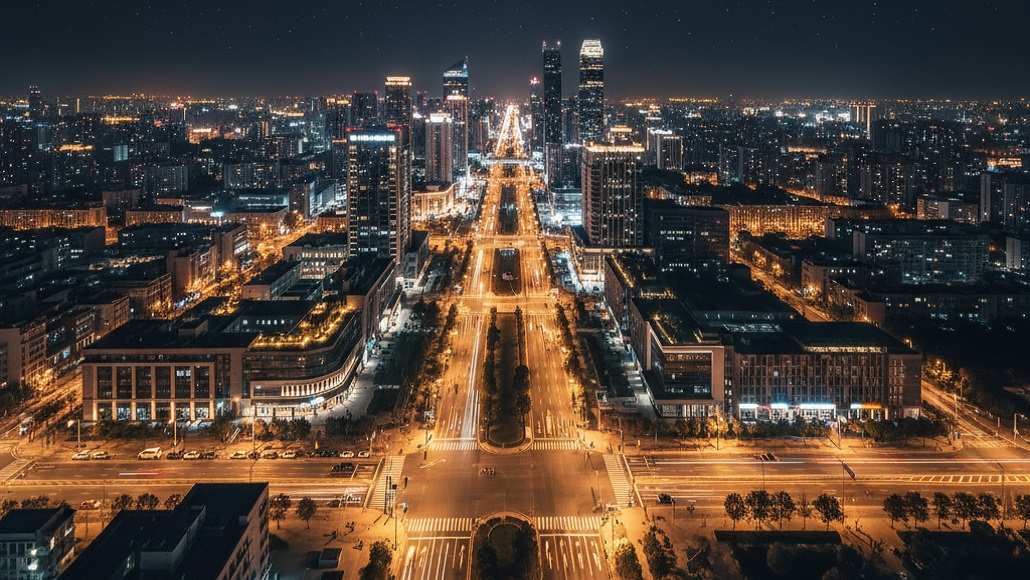Reducing Light Pollution Through Responsible Urban Lighting Design
The proliferation of artificial lighting in urban environments has created significant environmental and social challenges that require thoughtful design solutions balancing illumination needs with ecological responsibility. Responsible urban lighting design practices address light pollution through strategic system selection, precise optical control, and intelligent operational strategies that maintain safety and functionality while minimizing adverse impacts on human health, wildlife behavior, and astronomical observation.
Understanding Light Pollution and Its Environmental Impact
Light pollution encompasses various forms of excessive or misdirected artificial illumination that disrupts natural darkness patterns essential for ecosystem health and human wellbeing. Sky glow, light trespass, glare, and over-illumination represent different manifestations of poor lighting design that collectively create environmental problems requiring comprehensive design solutions and regulatory frameworks.
The ecological consequences of excessive artificial lighting extend far beyond simple aesthetic concerns to impact wildlife migration patterns, breeding cycles, and foraging behavior in ways that can disrupt entire ecosystem balance. Nocturnal species including bats, birds, insects, and marine life have evolved to rely on natural darkness cues that artificial lighting can severely disrupt, leading to population declines and ecological imbalances.
Human health implications of light pollution include disruption of circadian rhythms, sleep quality degradation, and increased risk of various health conditions linked to inadequate exposure to natural darkness patterns. Responsible urban lighting design must address these health concerns while maintaining adequate illumination for safety and functional requirements throughout urban environments.
Dark Sky Principles and Astronomical Protection
 Dark Sky International and similar organizations have established comprehensive guidelines for responsible urban lighting design that protect astronomical observation while maintaining necessary urban illumination levels. These principles emphasize full cutoff fixtures, warm color temperatures, and intelligent operational strategies that minimize sky glow while supporting legitimate lighting needs.
Dark Sky International and similar organizations have established comprehensive guidelines for responsible urban lighting design that protect astronomical observation while maintaining necessary urban illumination levels. These principles emphasize full cutoff fixtures, warm color temperatures, and intelligent operational strategies that minimize sky glow while supporting legitimate lighting needs.
Full cutoff luminaires that direct light precisely where needed while eliminating upward light emission represent fundamental tools in responsible lighting design. These fixtures can provide excellent illumination quality for pedestrian and vehicular safety while dramatically reducing sky glow compared to traditional lighting approaches that scatter light in all directions.
Color temperature selection significantly influences both sky glow characteristics and ecological impact, with warmer color temperatures generally creating less sky glow while being less disruptive to wildlife behavior patterns. Responsible urban lighting design increasingly specifies LED systems with color temperatures of 3000K or lower for most outdoor applications while maintaining adequate visual performance for safety and security requirements.
Strategic Illumination Planning and Zoning Approaches
Comprehensive lighting master planning enables communities to establish coordinated approaches to urban illumination that balance various stakeholder needs while maintaining consistent standards that minimize light pollution throughout entire metropolitan areas. These planning processes require collaboration between multiple municipal departments, utility companies, and community organizations.
Lighting zones based on land use patterns and community needs provide frameworks for appropriate illumination levels and design standards that match lighting intensity to actual requirements rather than applying uniform approaches throughout diverse urban environments. Residential areas, commercial districts, and industrial zones require different lighting strategies that respect their unique characteristics and user needs.
Adaptive lighting strategies that adjust illumination levels based on time of day, seasonal variations, and actual usage patterns enable significant reductions in light pollution during low-activity periods while maintaining appropriate illumination when and where it is actually needed for safety and functionality.
Wildlife Protection and Ecological Considerations
Responsible urban lighting design must address impacts on local and migratory wildlife populations through lighting strategies that minimize disruption to natural behavior patterns while maintaining human safety and security requirements. These considerations require understanding of local ecology and seasonal wildlife activity patterns that influence lighting design decisions.
Bird migration protection represents a critical consideration in urban lighting design, as excessive artificial lighting can disorient migrating birds and cause fatal collisions with buildings and infrastructure. Seasonal lighting restrictions and strategic fixture placement can significantly reduce these impacts while maintaining necessary urban illumination levels.
Insect populations serve as fundamental components of urban ecosystems while being particularly vulnerable to artificial lighting that disrupts their natural behavior patterns. Responsible lighting design minimizes blue and ultraviolet spectrum content while using fixtures that reduce insect attraction without compromising human visual performance requirements.
Advanced Optical Control Technologies
Modern LED lighting systems provide unprecedented opportunities for precise optical control that directs illumination exactly where needed while minimizing light trespass and sky glow. Advanced lens systems, reflector designs, and optical accessories enable responsible urban lighting design that maximizes lighting effectiveness while minimizing environmental impact.
Asymmetric optical distributions enable street and area lighting that provides excellent uniformity and visual performance while eliminating light trespass onto adjacent properties. These specialized optical systems require careful selection and application but can dramatically improve lighting quality while reducing environmental impact compared to traditional symmetric distributions.
Shielding and cutoff accessories for existing lighting installations provide retrofit solutions that can significantly reduce light pollution from traditional fixtures while maintaining adequate illumination levels for safety and security. These accessories represent cost-effective approaches to improving existing lighting installations without requiring complete system replacement.
Smart Controls and Adaptive Management Systems
Intelligent lighting control systems enable sophisticated management strategies that adjust illumination levels and operational characteristics based on real-time conditions while maintaining appropriate safety and security illumination throughout varying activity levels and environmental conditions. These systems provide both environmental benefits and operational cost savings.
Motion detection and occupancy sensing enable lighting systems that provide higher illumination levels when and where people are present while reducing light output during unoccupied periods. These approaches can dramatically reduce overall light pollution while maintaining safety and security performance when illumination is actually needed.
Astronomical timeclocks and daylight sensors provide automatic adjustment of lighting operation based on actual darkness conditions while accounting for seasonal variations and weather conditions that affect natural light availability. These systems ensure appropriate lighting operation while minimizing unnecessary illumination during periods of adequate natural light.
Community Engagement and Education Initiatives
Public education about light pollution and responsible urban lighting design builds community support for improved lighting practices while encouraging individual actions that contribute to overall light pollution reduction. These educational efforts help create informed public discourse about lighting quality and environmental responsibility.
Stakeholder engagement processes that include residents, business owners, and environmental organizations help ensure that responsible lighting initiatives address community concerns while achieving environmental objectives. These collaborative approaches often result in more effective and sustainable lighting improvements compared to top-down regulatory mandates.
Demonstration projects and pilot installations provide opportunities for communities to experience improved lighting quality while evaluating different approaches to responsible urban lighting design. These projects build public confidence in new technologies while providing valuable data for broader implementation efforts.
Economic Considerations and Cost-Benefit Analysis
The economic case for responsible urban lighting design encompasses both direct cost savings through reduced energy consumption and maintenance requirements, as well as indirect benefits including improved public health, enhanced property values, and tourism opportunities related to dark sky preservation and astronomical observation.
Energy efficiency improvements inherent in responsible lighting design often provide significant operational cost savings that can offset higher initial investments in quality lighting equipment and control systems. These savings compound over time while providing ongoing environmental benefits throughout system operational life.
Healthcare cost reductions associated with improved sleep quality and circadian rhythm support represent emerging economic justifications for responsible lighting design that addresses light pollution impacts on human health. These benefits are difficult to quantify precisely but represent genuine economic value for communities and healthcare systems.
Regulatory Frameworks and Policy Development
Outdoor lighting ordinances and design standards provide legal frameworks for responsible urban lighting design while establishing minimum requirements that prevent the most egregious forms of light pollution. These regulatory approaches require careful balance between environmental protection and legitimate illumination needs for safety and economic activity.
Building codes and development standards increasingly incorporate lighting requirements that address light pollution concerns while supporting sustainable development practices. Integration of lighting requirements with broader environmental regulations creates comprehensive approaches to sustainable urban development that address multiple environmental concerns simultaneously.
International cooperation on light pollution reduction enables coordinated approaches to protecting dark skies while supporting astronomical research and education. These collaborative efforts are particularly important for addressing sky glow that crosses municipal and national boundaries while requiring coordinated action for effective mitigation.
Emerging Technologies and Innovation Opportunities
Advanced LED technologies including tunable white systems and precise spectral control enable more sophisticated approaches to responsible urban lighting design while maintaining excellent visual performance for human activities. These technologies provide new tools for optimizing both human visual needs and environmental protection objectives.
Internet of Things integration and artificial intelligence applications enable increasingly sophisticated lighting management that responds to environmental conditions, wildlife activity patterns, and human usage while optimizing both lighting quality and environmental protection throughout varying operational conditions.
Research and development in lighting technologies continues to advance capabilities for responsible urban lighting design while reducing costs and improving performance characteristics that support broader adoption of environmentally responsible lighting practices throughout urban environments.
International Best Practices and Case Studies
Successful responsible urban lighting design initiatives from cities worldwide provide valuable models for other communities seeking to address light pollution while maintaining high-quality urban environments. These case studies demonstrate various approaches to balancing environmental protection with urban functionality and economic development needs.
Flagstaff, Arizona represents one of the earliest and most comprehensive examples of municipal light pollution control, with ordinances and design standards that have successfully protected astronomical observation while supporting urban development and economic growth. The Flagstaff model demonstrates that responsible lighting design can support multiple community objectives simultaneously.
European cities including Ljubljana, Slovenia and various communities in the Netherlands have implemented sophisticated approaches to responsible urban lighting design that integrate environmental protection with smart city initiatives and sustainable development goals. These examples demonstrate advanced applications of technology and policy coordination.
Performance Measurement and Continuous Improvement
Sky quality monitoring and light pollution assessment tools enable communities to measure the effectiveness of responsible lighting initiatives while identifying areas requiring additional attention. These measurement approaches provide accountability for environmental performance while supporting ongoing optimization efforts.
Before-and-after studies of lighting improvements provide valuable data about the effectiveness of different approaches to light pollution reduction while documenting benefits including energy savings, environmental protection, and community satisfaction with improved lighting quality.
Long-term monitoring programs track changes in light pollution levels while providing data that supports policy development and technology advancement efforts. These programs require sustained commitment but provide essential information for evidence-based decision making about lighting policy and design standards.
The implementation of responsible urban lighting design requires comprehensive approaches that balance environmental protection with legitimate human needs for safety, security, and economic activity. The most successful initiatives will be those that engage communities in collaborative planning while leveraging advancing technology and regulatory frameworks to achieve measurable improvements in both lighting quality and environmental protection throughout urban environments.































